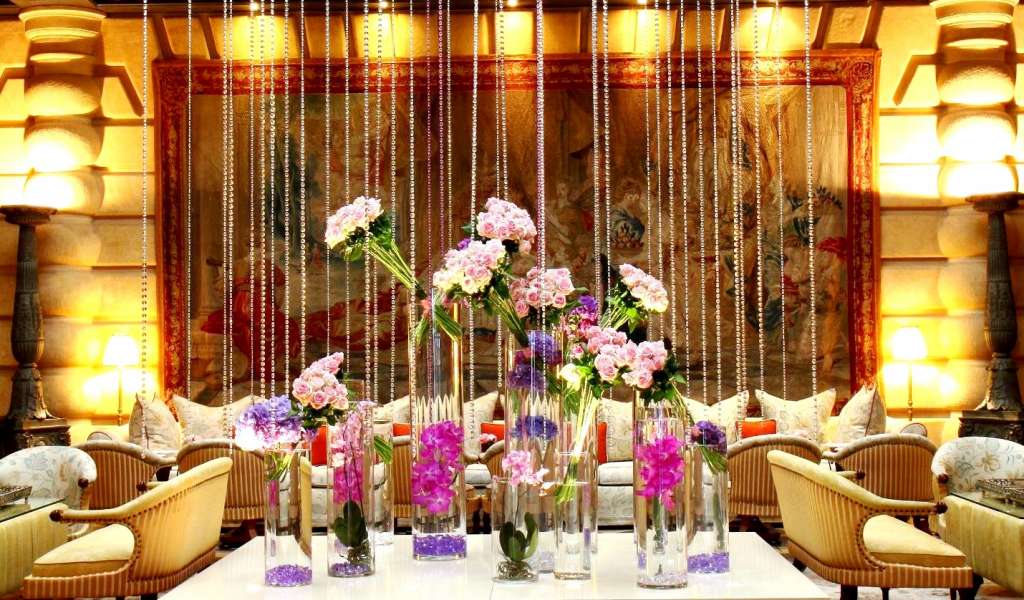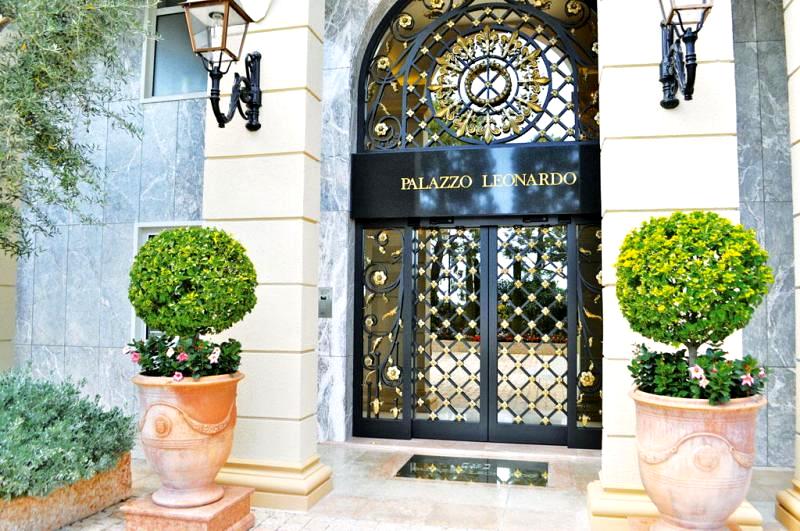On the face of it, Moscow’s luxury real estate market has had a tough year, with average prices falling from $18,800 per sqm to $15,800. But there are signs that the factors that have had such a powerful effect on the rest of the Russian economy – namely sanctions and a drop in the value of the rouble – could give the luxury property market in the capital something of a boost. “In times of instability, people invest in real estate as it is close to home and easy to understand,” saysMaria Litinetskaya, CEO of the Metrium Group real estate agency. As well as this socioeconomic aspect, several other factors give luxury real estate in the Russian capital hopes of recovery – starting with a capital amnesty and the effect of sanctions.
Sanctions and amnesties – bringing Russian money home and keeping it there
Eye-watering amounts of money have left Russia over the last few years and been invested elsewhere – over $400bn exited the country from 2008 to 2013. Property purchases in cities such as London, Paris and New York has accounted for a large part of this, creating strong Russian expat communities in these cities where they did not already exist. However, this capital flight is slowing, and Moscow’s luxury real estate sector stands to benefit. Rich Russians could now be looking to put their cash into Moscow property, and this has helped drive a 14.8% rise in apartments on offer in the third quarter of 2014 compared to the same period the year before.
Several factors have driven this rise. Recognising the threat of such huge capital outflows to Russia’s economic recovery, Vladimir Putin recently offered an amnesty to any Russian citizen holding assets abroad if they bring them back home, and this has compounded the effect of western sanctions that have shut a number of Russian banks off from global financial markets. Furthermore, the decline of the rouble, which has lost 40% of its value against the dollar in 2014, is encouraging wealthier Russians to get their cash in as solid an investment as possible.
According to Anastasia Mogilatova, CEO of the Moscow-based Welhome consulting company, this means sanctions could indirectly benefit Moscow’s luxury property sector, even creating a shortfall in high-quality residences. “In terms of demand, you could even forecast an increase in the high-end residential sector. The introduction of sanctions has limited international access for several types of Russian citizen, and accordingly it has become more difficult for them to buy property. For this reason, some of the demand for real estate abroad could move towards Russian property. In this scenario, there could be a lack of high-quality luxury property in the mid-term,” she told the Russian property website rbc.ru.
4 million sqm of luxury real estate is planned for construction over the next ten years, and it will certainly be needed if Putin can successfully persuade Russians holding assets abroad to bring their cash back home.
Expat flight
In the short term, however, when these new Russian buyers are looking for high-end apartments, they will find a wide selection vacated by a group that were previously important customers for Moscow’s estate agents – European and western expats.
A variety of international companies has been hit hard by sanctions imposed by both sides. The oil sector has suffered particularly badly, with Exxon Mobil’s Arctic joint venture with Rosneft among the major energy projects shut down, and banks such as Morgan Stanley and JPMorgan are seeing highly placed employees leave the country. Other international companies are also trimming their Moscow presence, leaving their employees, who in better times accounted for up to 80% of the capital’s luxury housing tenants, with no choice but to head home.
 This is having an effect on Moscow’s luxury real estate sector, at least where rentals are concerned. Recently, owners have been regularly forced to accept 10-15% discounts when renting out their properties, as well as easing break clauses in their contracts, while the time taken to close a deal has doubled. However, Moscow witnessed a similar ‘expat flight’ in both the 1998 and 2008 economic crises, and the Western companies – and their employees – eventually re-expanded their Russian presences in the following years. Speaking to the website Russia-insider.com, former Merrill Lynch country chief Bernie Sucher suggested that the current situation does not necessarily have to last as long as the previous two, as it is primarily political in nature rather than representing the effects of economic shock.
This is having an effect on Moscow’s luxury real estate sector, at least where rentals are concerned. Recently, owners have been regularly forced to accept 10-15% discounts when renting out their properties, as well as easing break clauses in their contracts, while the time taken to close a deal has doubled. However, Moscow witnessed a similar ‘expat flight’ in both the 1998 and 2008 economic crises, and the Western companies – and their employees – eventually re-expanded their Russian presences in the following years. Speaking to the website Russia-insider.com, former Merrill Lynch country chief Bernie Sucher suggested that the current situation does not necessarily have to last as long as the previous two, as it is primarily political in nature rather than representing the effects of economic shock.
New arrivals from China
The huge $400bn deal Russia signed to sell its gas to China showed it is looking eastwards in its energy policy – and an increase in luxury real estate purchases and rentals in Moscow by Chinese companies and individuals suggests the same could be happening in its property sector. In a study of the Moscow rental market published last month, the Russian news site lenta.ru quotes Moscow realtor Konstantin Kovalev as saying that European and American customers are being replaced by Brazilians, Indians and Chinese, as well as tenants from North Africa and the Middle East.
This will be a slow process though – the luxury property sector can forget about a sudden wave of new arrivals from these countries to replace departed European tenants, said Russian academic Alexei Makarin, again speaking to lenta.ru. “Asian clients are not going to get into these vacated spaces at breakneck pace. Big business doesn’t like fuss. You need to understand that European and American companies themselves didn’t come to Russia immediately. They opened modest offices in the early 90s, which then transformed into branches – their bases grew, but not dramatically.”
Another group of tenants helping keep the luxury market moving are actually Ukrainians – Moscow’s universities are the destination of choice for children of well-off families from Russia’s neighbour, and the start of the 2014 academic year in September saw an increase in Ukrainian tenants of luxury apartments. This was the second entry of Ukrainians into Moscow’s property market after a similar wave in June, and they have helped boost demand considerably in the $10-15,000 luxury rental bracket.
Where is luxury property growing?
The luxury market has seen a change in customer demographics, and there have been some interesting movers in the ranking of Moscow’s region by luxury housing construction growth.
The majority of the big movers are in central Moscow. The Plyuschikha region, close to the historic Old Arbat street, saw the biggest increase in luxury housing on offer with 109,200 sqm, while the Yakimanka and Arbat regions, both no more than a kilometre from Moscow’s historic centre, increased their luxury stock by 43% and 25% respectively. The Taganskiy region increased its stock by a huge 161%, the biggest increase in the city, while outside the centre the Ramenki region, home to Moscow State University and the Mosfilm production studio, boasted 24,300 sqm of luxury housing, a rise of 48% on last year.
One factor affecting luxury developments in central Moscow is simply a lack of space, but experts in the sector are confident that this will not affect their ability to supply potential buyers and investors with high-quality luxury housing. “Even in Monaco, where the most expensive real estate in the world is concentrated and where almost every square centimetre is built on, they find plots for new projects,” said Elizaveta Nekrasova, CEO of the Must Have luxury realtor, in an interview with the Russian business journal Vedomosti. “The top-end market transforms quickly, architectural trends change, and utilities, planning and environmental solutions are improved. This is clearly visible in Moscow’s case, where homes considered elite 15 or 20 years are now simply considered ‘business class’.”
luxury housing. “Even in Monaco, where the most expensive real estate in the world is concentrated and where almost every square centimetre is built on, they find plots for new projects,” said Elizaveta Nekrasova, CEO of the Must Have luxury realtor, in an interview with the Russian business journal Vedomosti. “The top-end market transforms quickly, architectural trends change, and utilities, planning and environmental solutions are improved. This is clearly visible in Moscow’s case, where homes considered elite 15 or 20 years are now simply considered ‘business class’.”
‘Berlin-style cool’
Architectural tastes are definitely changing in the Moscow luxury market – gone are the days of huge, garish extravagance that categorised Moscow’s real estate market in the 90s. In an article entitled ‘No more golden toilets’, the Moscow Times revealed last month that the most popular size for a luxury apartment is now around 100-150 sqm, compared to the 300+sqm pads that constituted the average luxury apartment 20 years ago, with a desire for functionality behind the shifting tastes.
An interesting sign of these changing preferences is the ArtKvartal, a $10bn project to regenerate formerly industrial space in Moscow’s northeast, creating a cultural hub that is planned to house 110,000 people over the next decade. A feature on the development in the Financial Times stated that it would bring ‘Berlin-style cool’ to Russia’s capital, but some of the prices that apartments in the complex are predicted to sell for would be out of the reach of your average Kreuzberg bohemian – the top-floor penthouse in the ArtHouse development in ArtKvartal has a $25 million price tag.
New tax rate
One recent development worth mentioning is a change in residential taxes. Russia’s parliament passed a motion in September that means properties are now assessed for tax based on their ‘cadastral value’, which is much closer to market price than the inventory values used previously, which were often over 20 years old. While the tax is much lower than previously (0.1% for flats in blocks, 0.5% for apartments), the new values it is now applied to mean owners of luxury properties have seen an increase in their tax bills. According to Anastasia Mogilatova, this could have an effect on purchases for investment rather than for living in, but it is unlikely to affect the market for luxury property in central Moscow. “For elite apartments favourably located in central Moscow, where a lack of high-quality options is forecasted in the short term, this (tax change) will have less of an impact.”
2015 – a change for the better?
Recovery in the Moscow luxury sector is top of the Christmas list for many parties. Producers of bathrooms, ceramics and luxury stoneware want to maintain a valuable and traditionally well-performing export market, while the building sector in general would benefit from growth in the luxury sector to complement the rise in investment purchases, shared construction agreements, and number of Moscow residential complexes witnessed last year.
If the sector can meet potential demand from Russian investors finding a safe haven for the rouble, and builders can find space in the in-demand centre of Moscow, luxury housing could follow its own independent path of growth regardless of geopolitics

